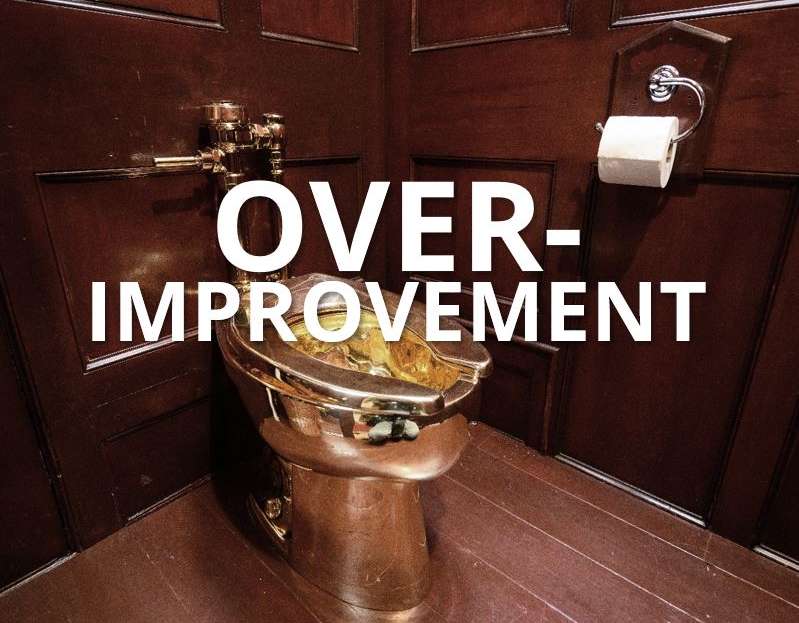When valuations don’t reflect the money the homeowner spent
I hadn’t been an AACI for very long when it happened: I was doing an inspection of a pretty standard, older 3-bedroom bungalow outside of Hamilton, and the homeowner insisted I see the master bathroom first.
“You have to see this!” he said, leading me toward the back of the house. When I got to the bathroom door, I guess my face didn’t register the amazement he expected, because he started to point to individual items: The pink marble (everywhere); the gold-plated faucets (real gold! on the shower and both sinks!); the chandelier (Swarovski crystals!). “We spent more than $27,000 on this room – the shower faucet alone was $1500! A real estate agent said it definitely adds $50k to the value of the house.”
The guy was proud of his bathroom, and I understood where he was coming from: He and his wife had spent a lot of time and a lot of money creating a dream bathroom for themselves. They were emotionally invested in it, and now that they were having to move due to some work changes, they wanted at least to feel like they were going to recoup the money they’d spent.
Except it was a radically upscale bathroom in an otherwise pretty normal home, and I knew that for every potential buyer who loved it that bathroom, there’d be another who had a strong aversion to all that pink marble and would have preferred a standard white subway tile.
How do you handle it in the moment?
As an appraiser, I often feel torn: I’m aware of the emotional attachment people have to their homes, and it feels cruel to be too clinical when faced with a vendor’s obvious pride; at the same time, I have an obligation to be neutral and disinterested. Not just because the homeowner isn’t my client, but because while good valuations should take general emotions into account (i.e. things like curb appeal or a current upswell of interest in a particular neighbourhood), they should never reflect personal or specific emotions. You can’t defend a valuation in court by saying “I just really got a good feeling, and the homeowner loved that place.”
In this particular case, I did take a moment to admire the faucets (they were pretty cool, to be honest), but then quickly moved on to viewing the rest of the house.
How much should you educate the homeowner?
Here again, I often feel torn: The homeowner isn’t my client, and in fact I probably never have to see this person again, so there’s no harm in being polite and professional in the moment, even though I know my valuation is going to be much less than the homeowner expects. But I feel some obligation, as the professional who is the least invested in the actual value of the property, to prepare the homeowner for what’s to come: I want to tell him that when you over-improve a property, or improve one part of it in a highly-specific way, you just can’t expect to recoup your money in the short term.
The comparable sales speak for themselves in the end
When I returned to the office, I discovered that a couple of the comps in the neighbourhood had older bathrooms, so I was able to give the property a bit of an adjustment for the master bath; I made special mention of the glamorous bathroom and noted that it might have additional appeal for some buyers. But in the end the comps were pretty clear about the market value of the property, and it definitely didn’t command a $50k, or even a $25k, premium. The sale price turned out to be within 3% of my valuation, so from a professional perspective, I know I did the right thing. But I still feel a bit badly for that guy – he loved that bathroom.


